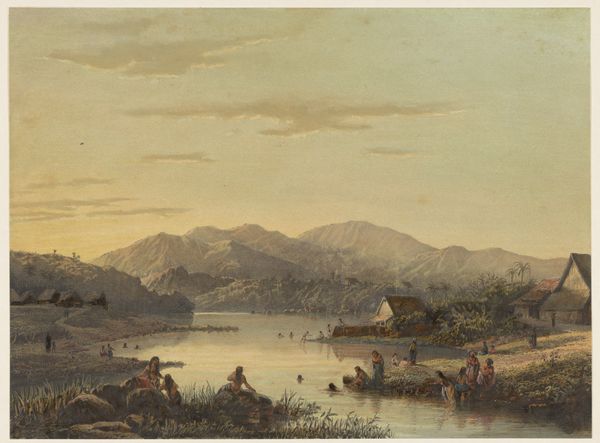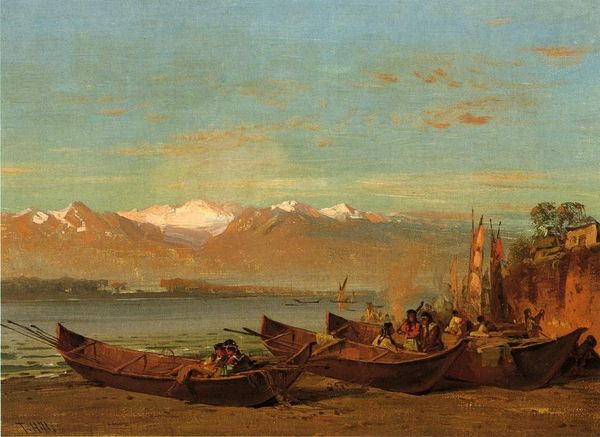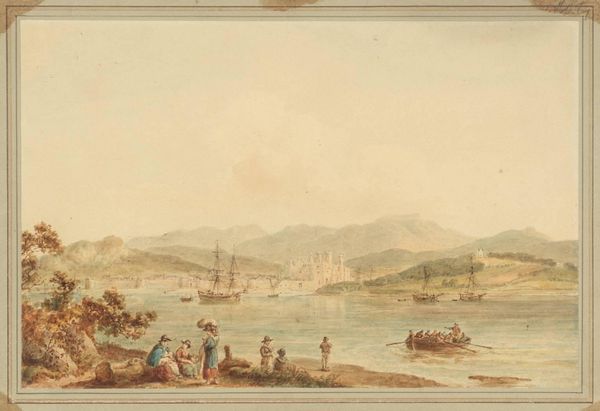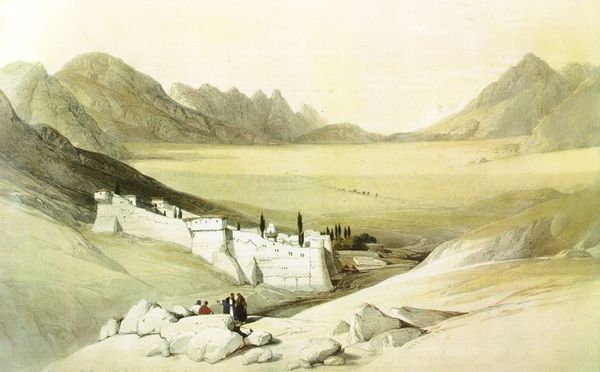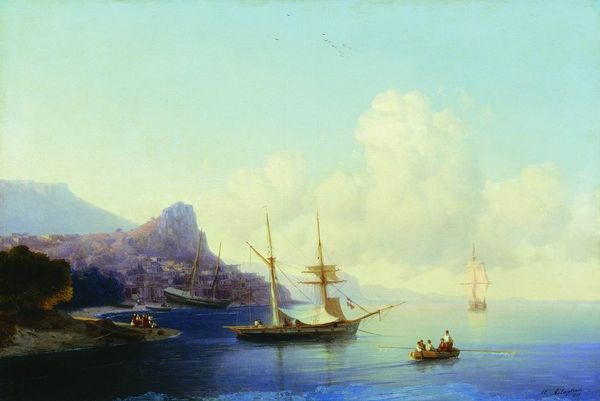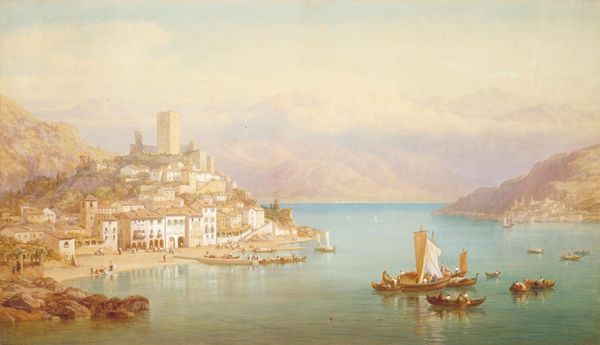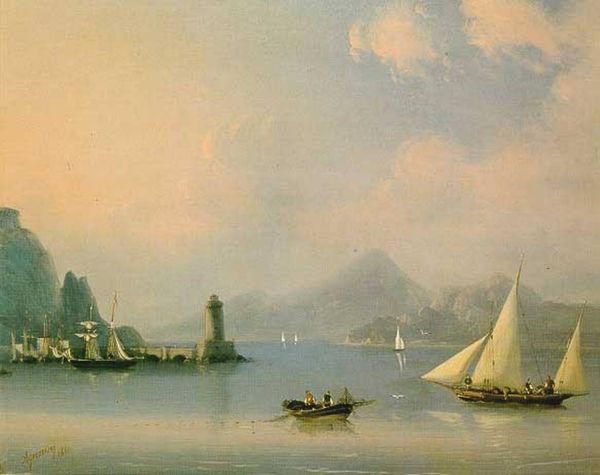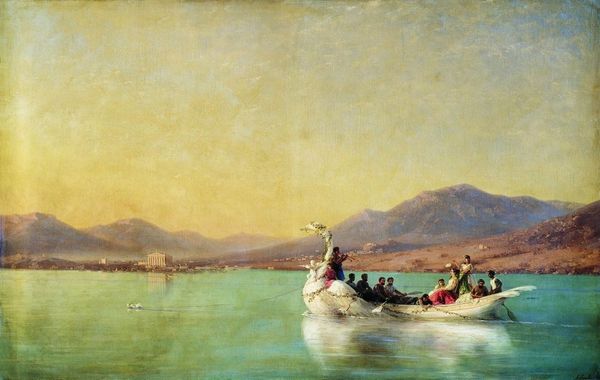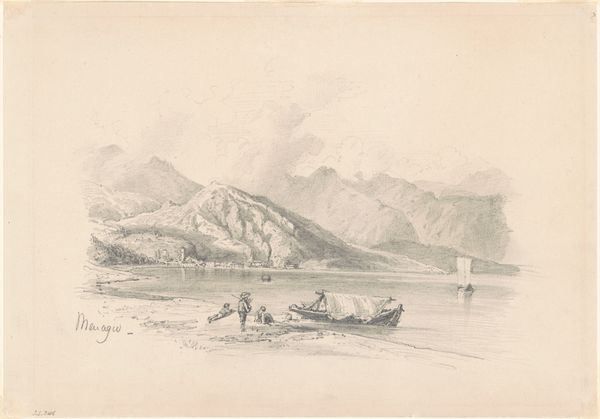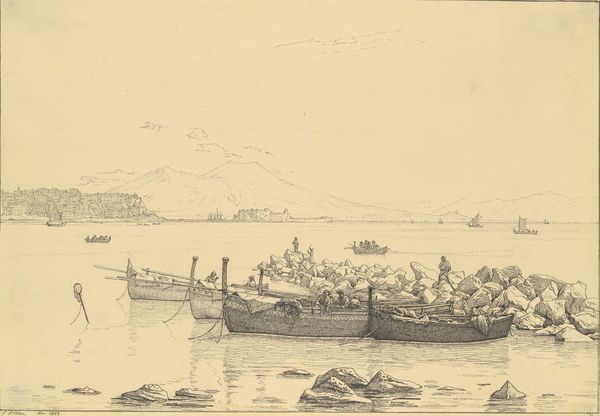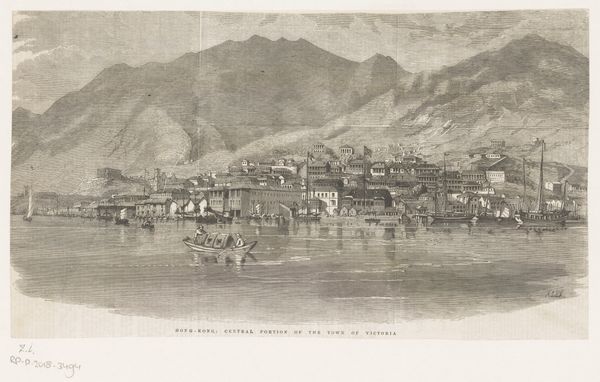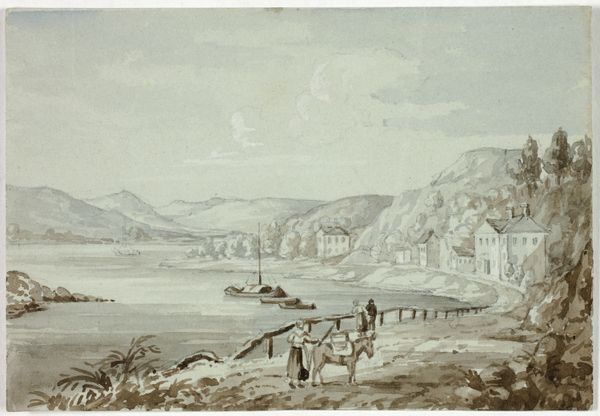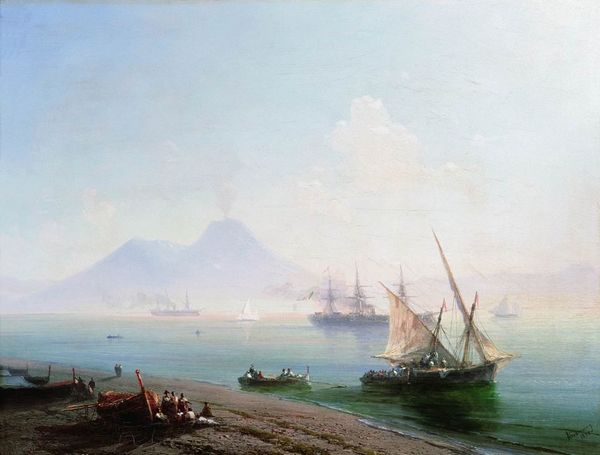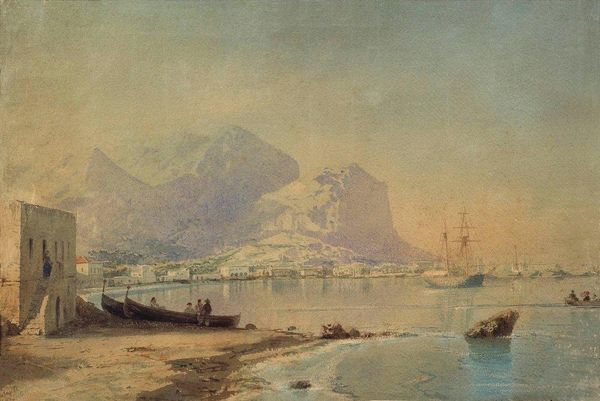
#
landscape
Copyright: Public domain
Curator: This watercolor painting by Karl Bodmer, created in 1834, depicts the "Camp of the Gros Ventres." Editor: There’s an almost immediate contrast; the rough texture of the shore meets the smooth watercolor, suggesting the stark reality of encountering the indigenous population. A beautiful scene, but it's undeniably fraught. Curator: Indeed. Bodmer was part of Prince Maximilian’s expedition to document Native American life and the American West. The scene presents us with a tableau that reflects both observation and the artistic conventions of its time. Consider the materials. Bodmer didn't just find these pigments; their accessibility and quality speaks to the developing supply routes and trade networks penetrating the continent. Editor: And look at the positioning of the encampment; so distant. It shrinks under the dominating romanticized mountains in the background and that looming sailboat full of travelers. The image speaks to the larger narrative of displacement and contact zones, highlighting the socio-political forces at play. This piece functions as documentation but also perpetuates an idea about the power dynamic during westward expansion. Curator: Precisely. The very act of rendering this scene in watercolor also carries social implications, contrasting with traditional oil painting and signaling the rise of more democratic artistic techniques. The process allows for reproducibility through prints. What becomes visible and what is occluded says so much about how such representations are actively shaped by broader institutional forces. Editor: What a remarkable synthesis; the scene embodies tension and tranquility simultaneously. The encounter itself, that edge between the arriving travelers and those who await them on the shores, it holds our gaze. Curator: We come face to face with our own relationship to such imagery. And in seeing, maybe start to recognize something that also speaks about its contemporary afterlife. Editor: Yes, it is an important image in thinking about our present relationship to that history. Thank you for sharing that unique perspective.
Comments
No comments
Be the first to comment and join the conversation on the ultimate creative platform.
